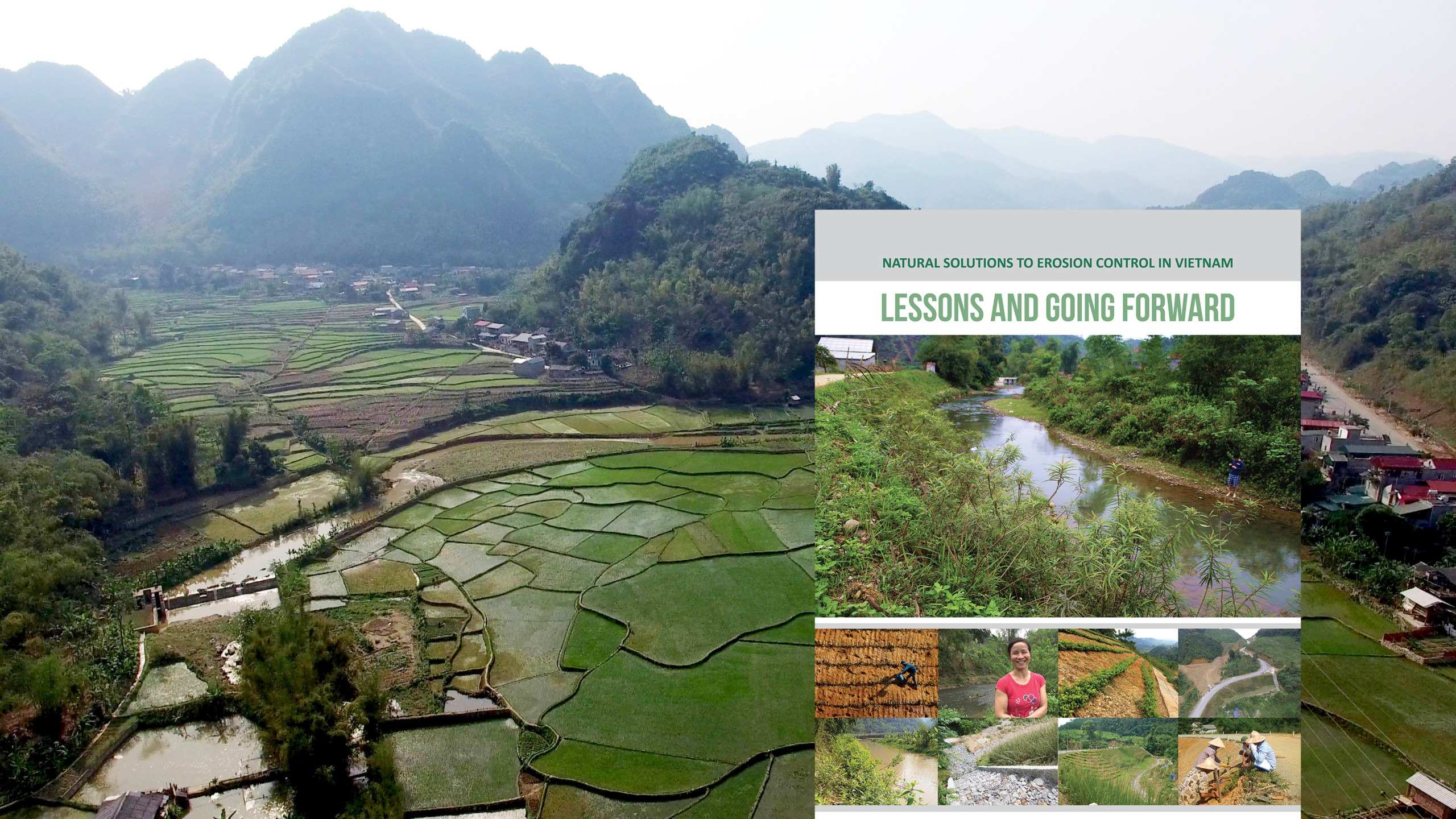Project Description
Natural Solutions to Erosion Control in Viet Nam – Lessons and Going Forward
The objective of the Promoting Climate Resilient Rural Infrastructure in Northern Viet Nam project was to demonstrate and promote the application of effective bioengineering measures in road and riverbank slope protection, and to initiate the development of a relevant policy framework so that the techniques employed in these bioengineering demonstrations can be replicated elsewhere in the country. The sites trialled a range of bioengineering techniques at four demonstration sites in northern Viet Nam, and formed the physical basis of a process of knowledge transfer to Ministry of Agriculture and Rural Development (MARD) and Department of Agriculture and Rural Development (DARD) staff through associated workshops and site visits. Vietnamese technicians at various levels were introduced to the concept of bioengineering, involved in the site design and implementation process, and were shown first-hand how the methods are applied and work. A grant for this technical assistance (TA) project was provided by the Global Environment Facility (GEF) through the Asian Development Bank (ADB).
The project ran for four and a half years (until May 2017), and was the first of its kind in the country. Lessons from the project will be helpful going forward, and defining these is the reason why ICEM produced Natural Solutions to Erosion Control in Viet Nam – Lessons and Going Forward. Whilst some lessons are unique to Viet Nam, most of the lessons learned from constructing the bioengineering demonstration sites in the mountainous region of northern Viet Nam apply to all low-cost slope protection projects anywhere in the world.
Download Natural Solutions to Erosion Control in Viet Nam – Lessons and Going Forward
For more information, visit the the Promoting Climate Resilient Rural Infrastructure in Northern Viet Nam project page
Watch the documentary, Bringing Nature Back, for background to the project





